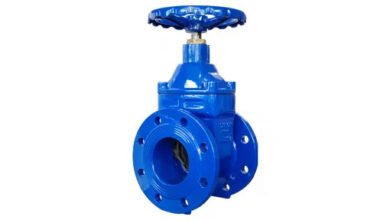Warehouse Automation: Things that you must know

The benefits of warehouse automation go beyond the economic and operational. Automation has helped companies reduce safety hazards, eliminate repetitive manual tasks, and increase worker productivity. Companies with automated systems have seen significant improvements in their bottom line. Companies implementing the latest warehouse automation technologies can expect to gain lower overheads and a more efficient warehouse to save millions of dollars.
Warehouse Automation companies offering warehouse operations provide several advantages over manual, traditional processes. These advantages result from the increased efficiency, increased safety, and faster turn-around times achieved by warehouse automation.
The main goal for any warehouse is to ensure that all products are safely stored and not damaged due to inadequate shelving.
A sound system can help reduce the amount of damage in the warehouse. Studies have shown that automated pallet handlers can reduce total damage per pallet by 48%.
This includes damage caused during the transit of products from the pallets to the storage racks, as well as damage caused by forklifts while they are storing and retrieving items.
Benefits of Warehouse Automation
From reducing labor costs to improving efficiency and inventory management, warehouse automation has many advantages for business. In this article, we also discuss ways to integrate various technologies into your warehouse which can give you a competitive edge.We will now discuss some of the major benefits of warehouse automation:
Reducing Labor Costs
In order to reduce the costs associated with labor, many businesses have turned to automation. The use of automated solutions such as conveyors and lift trucks has significantly reduced the time it takes employees to perform their daily tasks. For example, in a typical manual shipping operation employees would have to find the cartons containing an item which was then transferred manually onto a truck or ship. With automation, however, there are now powered carts which deliver the items to a staging area. This allows employees to pack more items into a single shipment and increases efficiency by reducing the number of employees needed to ship the goods.
Better Flow of Materials:
Without effective processes in place, it can be difficult to ensure that materials are delivered when they need to be. With warehouse automation, businesses can improve their processes and have goods shipped in a timely manner. By having a fully automated warehouse, companies can focus on the actual delivery of the goods instead of worrying about the logistics.
Improved Productivity:
Not only do businesses gain an advantage when it comes to labor reduction and improved flow, but they also are able to improve their productivity. When using an automated system, there is no need for employees to search through SKUs or store inventory items. This means that workers have more time to focus on other processes such as making new sales and marketing.
Improved Customer Service:
By using automated solutions such as conveyor systems, businesses are able to reduce the time it takes to get an item from the warehouse to the customer. This means that customers will receive their orders in a timely manner, which helps promote customer loyalty.
Better Quality Control:
Because warehouses are able to run more efficiently when using automated systems, there is more time for quality control. Workers can spend more time monitoring and inspecting shipments for damage that may occur during transit or storage. This can help to improve the company’s reputation and save the organization money through avoiding making unnecessary shipments.
Integrating Automation into your Warehouse
Once you have decided to integrate warehouse automation into your operations, there are a few characteristics that you need to consider. Some of these include:
Task Automation: Many warehouses have made the decision to automate certain tasks, but not others. This means that workers are still responsible for inventory management and shipping tasks which can result in long hours. A task automation system will allow users to take on the roles of warehouse managers who are responsible for all activities, but do not need to spend all their time managing.
Process Automation: For businesses which use standalone systems, it can be difficult to integrate a broad number of different technologies into their entire workflow. Simply integrating an inventory solution into your system may not be enough for many companies and may require more complex solutions. Using a process automation system will allow you to build a customized solution that fits your business and the way in which you operate.
How does it benefit workers?
Workers in warehouses move up to ten times their body weight daily due to lifting, pushing and pulling.
This intensive labour can lead to musculoskeletal disorders (MSD) such as back, shoulder, knee or wrist pain. According to OSHA standards, repetitive lifting is one of the most dangerous workplace activities for various reasons.
Warehouses and logistics companies eliminate these risks by using powered industrial trucks and automated storage systems. Automation can reduce the risk of injury and the opportunity for repetitive stress injuries by removing heavy lifting and repositioning activities from workers.
According to a study published in “Through the Lens”, an OSHA newsletter, “heavy lifting contributes to more than 15% of all disabling injuries.”
Warehouse Automation solutions can also significantly improve worker productivity by reducing the time workers spend on manual tasks.
A warehouse equipped with automated conveyors that eliminate manual order picking and sorting can see a 20% increase productivity.
The improved efficiency results from reduced time spent on delays and waits time since pickers are not searching for products on multiple pallets or floors at once. Automated storage systems can also free up workers to focus on other activities rather than working in confined spaces lifting heavy loads. Automation has been shown to increase productivity by 35% to 60%.
How does automation make the workplace safer?
Since warehouse automation removes the manual overhead and lifts tasks, it can drastically reduce workplace accidents.
Injuries may be inevitable when people work with heavy items, but the right technology can make all the difference. Studies have shown that implementing automated storage has significantly reduced employee injury frequency by 40%. This reduction in injuries can often be attribute to the increase in productivity create by storage systems.
Automation can significantly improve the safe environment by reducing the number of times a worker is expose to hazardous materials like chemicals and cleaning supplies. To eliminate workplace hazards, warehouse managers must evaluate their environments and implement controls that prevent accidental spills and chemical exposure when using chemicals.
Conclusion
Incorporating advanced technologies like container tracking systems have a significant impact on safety . Because they allow workers to accurately monitor where materials are on their way to customers or storing resources for reorders. Tracking systems also provide real-time updates on stock levels, contributing to an organisation’s overall inventory control strategy. These systems can help prevent theft and significantly impact company regulations.




